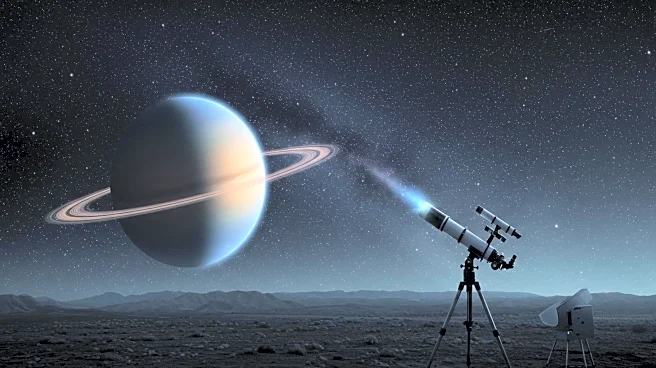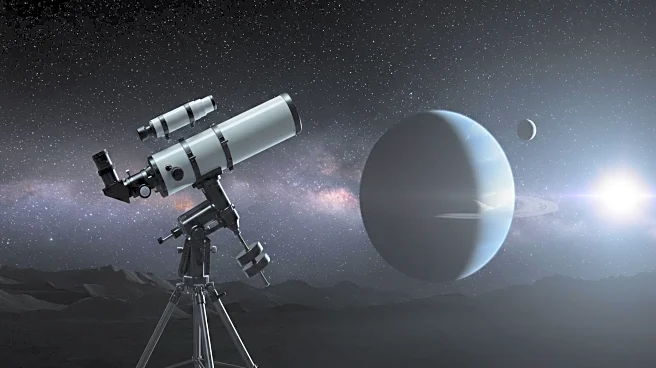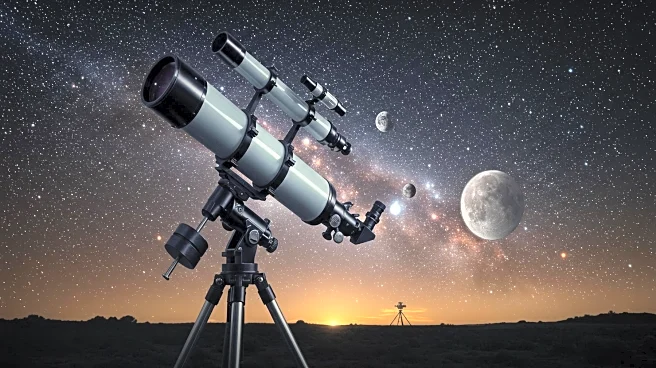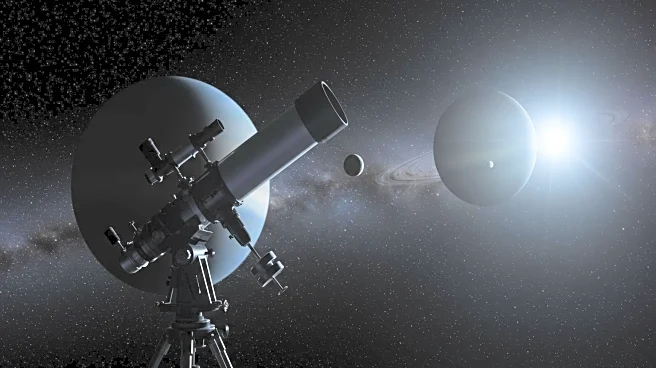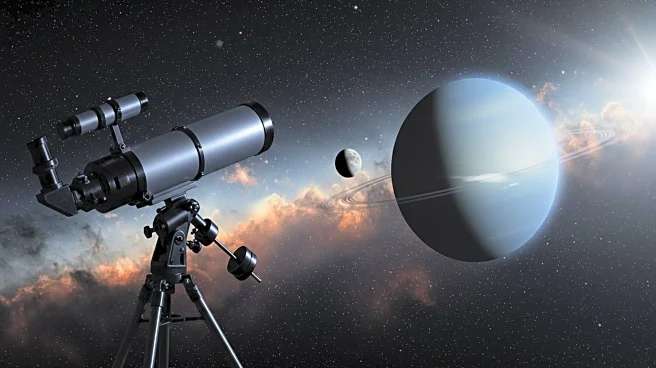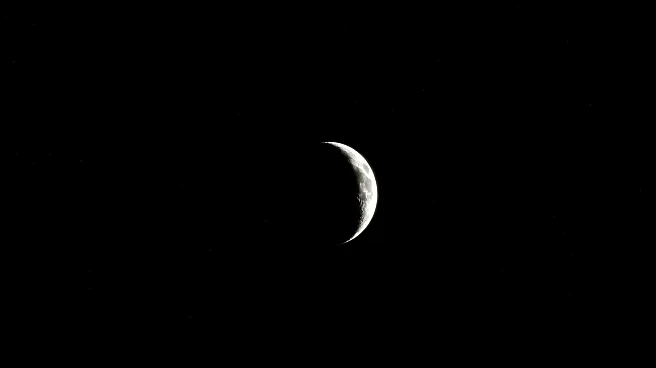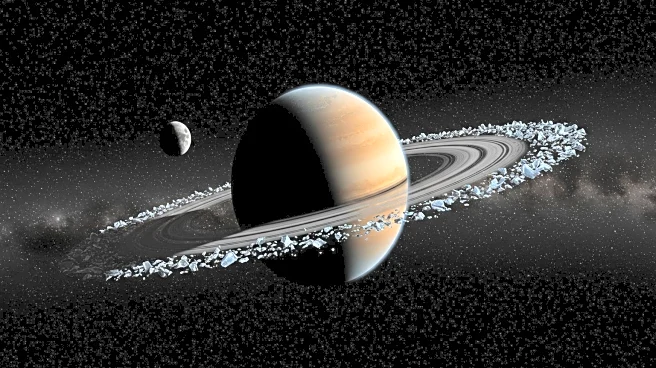What's Happening?
Astronomers have discovered a new moon orbiting Uranus using NASA's James Webb Space Telescope (JWST). The moon, provisionally named S/2025 U1, is estimated to be 10 kilometers in diameter and orbits Uranus between the orbits of Ophelia and Bianca. This discovery increases the known number of Uranian moons to 29, highlighting the complex system of small inner moons surrounding the planet. The detection was made during an observation on February 2, 2025, by a team led by the Southwest Research Institute in Boulder, Colorado. The discovery underscores the advanced capabilities of JWST in detecting smaller celestial bodies compared to previous missions.
Why It's Important?
The discovery of S/2025 U1 highlights the advanced capabilities of the James Webb Space Telescope in expanding our understanding of Uranus's moon system. This new moon adds to the complex interplay between Uranus's rings and its numerous small inner moons, suggesting a turbulent past. The ability to detect such small celestial bodies provides astronomers with valuable insights into the dynamics of planetary systems and their evolution. This discovery builds upon the legacy of previous missions like Voyager 2, pushing the frontier of space exploration further and enhancing our knowledge of the outer Solar System.
What's Next?
Following the discovery of S/2025 U1, astronomers may continue to use the James Webb Space Telescope to explore Uranus's moon system further. The telescope's capabilities could lead to the identification of additional moons or other celestial phenomena. This ongoing research will likely contribute to a more comprehensive understanding of Uranus's complex satellite system and its interactions with the planet's rings. The findings may also inform future missions aimed at exploring the outer Solar System and its planetary bodies.
